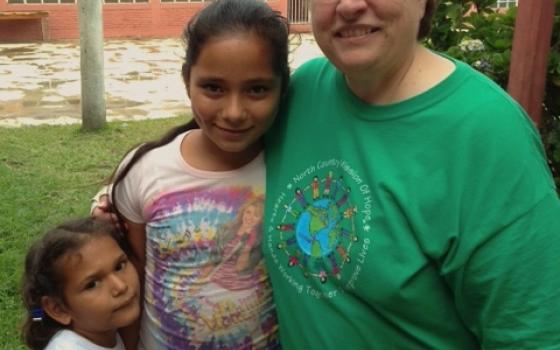In 1998, Dominican Sister of Hope Debbie Blow led a group of high school students on a trip to Nicaragua. Inspired by Nicaraguan refugees attending the high school where Blow served as campus minister, the group went to repair damage caused by Hurricane Mitch. Almost two decades later, Blow is now the co-founder and executive director of North Country Mission of Hope, a “humanitarian, spiritually based” organization providing education and community development in Nicaragua.
Blow spoke to Global Sisters Report about Nicaragua and the current migrant child crisis.
The surge of unaccompanied migrant children coming to the U.S. from Central America has been in the news of late. However, most people don’t realize that almost none of these children are coming from Nicaragua, one of the poorest countries in the Western Hemisphere. Why is that?
First of all, although Nicaragua is still listed as the second poorest country in our hemisphere, what makes it unique from El Salvador, Honduras and Guatemala are several factors, one of which is the level of violence — and I'm talking about extreme violence, gangs and murders. In Nicaragua, violence is minimal compared to El Salvador or Honduras and Guatemala. So that's one thing people don't realize. And it's not drug-infested like Honduras, El Salvador and Guatemala.
The other thing that people don't realize is that Nicaragua has actually had more than 20,000 kids come to their border in the last couple of years. So there is a southern movement as well as a northern movement. This is not new, these refugee kids leaving and going to other countries; that's been going on for four or five years. It's just gotten ‘worse’ recently because they're now arriving at our borders; so now, suddenly, we are hype to the reality.
So, kids are actually fleeing to Nicaragua - how did Nicaragua avoid the drugs and the violence that seems to have wracked the rest of the region?
The bottom line is . . . we were trying to squash the Sandinista revolution. In the ‘60s and ‘70s, the U.S. was funneling and putting money into trying to change policies in Guatemala, Honduras and El Salvador. So, in that aftermath of those failed revolutions, there were some heavy-handed policing efforts going on to try to control the situations in those countries. And that's just public knowledge. I'm not sharing anything that most people don't know. And so, of course, the United States was involved in those policies.
The one key difference between Nicaragua and those other three countries is that Nicaragua was the only country where the revolution won, so the U.S. did not get involved in their policies. Nicaragua did a grand sweep in terms of changing how they approached violence in their communities, and their government really worked hard at reforming the military and the police efforts. Nicaragua moved more towards community policing, and I've witnessed this personally.
So what do we do? If U.S. foreign policy is at least partially responsible for the creating the current crisis, how do we fix it?
It's so complicated and layered, it's not going to get resolved quickly. However, from my perspective as a Dominican Sister of Hope, the question is always: How do you offer hope to the most marginalized among us? It's not, “Do we offer hope, it's how do we offer hope?” That's my role as a Dominican Sister of Hope; we focus on the poor and the marginalized. And so, that's a key piece for me, always discerning what we do next.
But I do think we owe it to the American people to help them understand that these kids are not primarily coming here because they see the land of opportunity where they're going to get jobs. They are coming here fleeing for their lives. I can tell you from my own experience kids don't generally — even the kids that are abandoned — they don't want to leave their country. They don't want to leave what they know is their home, no matter how bad it is. They don't want to do that unless there's something that is really instilling fear.
[Dawn Cherie Araujo is staff reporter for Global Sisters Report.]


